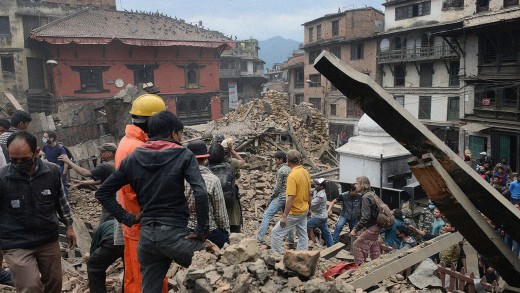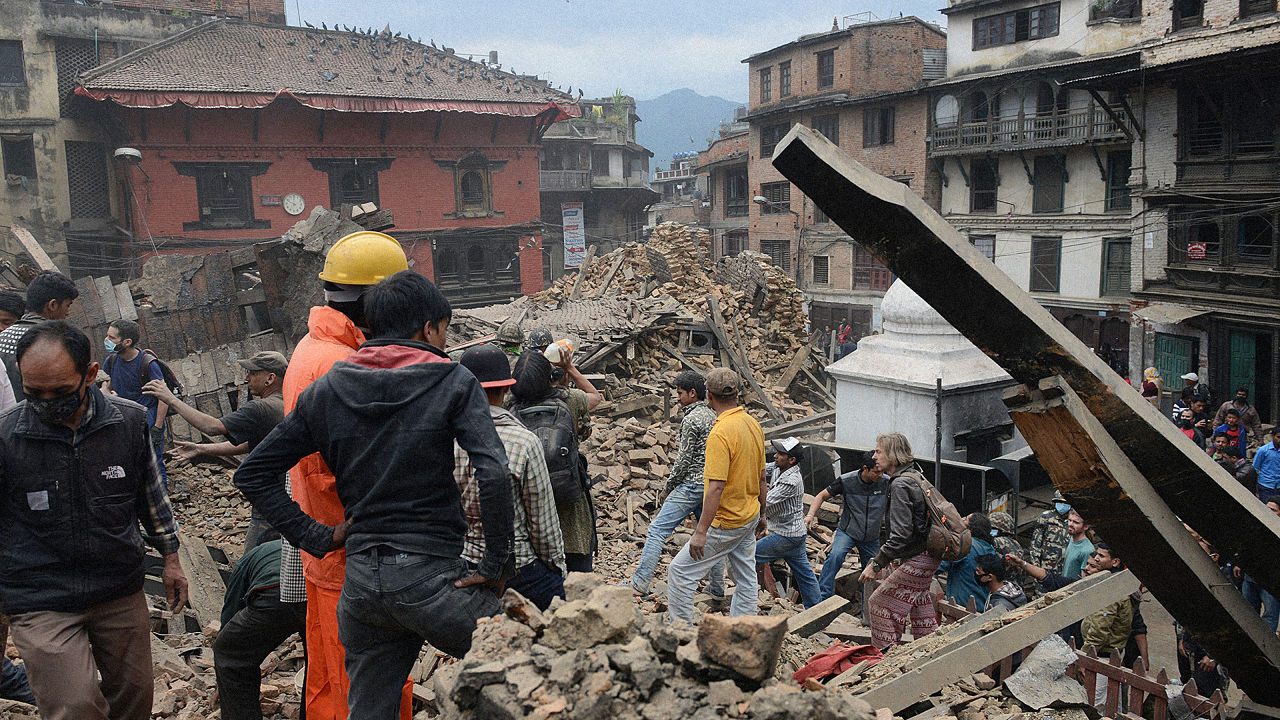How The sweet Crush of knowledge Is Saving Lives In Nepal
The UN and Frog have teamed up on a platform that’s unifying knowledge and first responders alike.
April 30, 2015
When storm Haiyan struck the Philippines, it killed greater than 10,000 individuals in a topic of hours. Dale Kunce, a senior geospatial engineer for the American pink pass, was scrambling stateside to map the tragedy for first responders. The Philippine executive had sent 40 pages of impulsively scanned Excel tables. “It wasn’t even scanned with the aid of a machine scanner. So the pages can be became moderately every time,” he says. the info, so an important to planning recovery efforts, was once pointless in that type. Dozens of volunteers have been tasked with retyping the guidelines just for him to begin work.
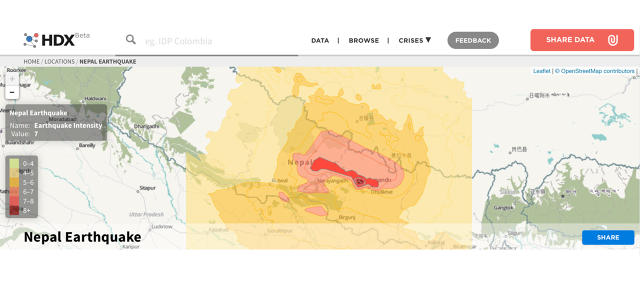
one of these logistical hassle was once common unless ultimate year, when the UN place of work for Coordination of Humanitarian Affairs (OCHA) and the global design firm Frog launched a new website called HDX—short for the Humanitarian knowledge trade. It has a smooth user interface and meticulously coordinated knowledge units that, collectively, create a platform that helps disparate humanitarian organizations work together. The UN first deployed it all the way through the Ebola pandemic in Africa, where it supplied baseline information on clinics, deaths, and new outbreaks. And now, for its 2nd major day trip, it’s sharing dozens of key data units coming in from Nepal.
“It’s like the candy Crush of catastrophe information sharing,” Kunce says, alluding to its addictive entrance-finish enchantment. And it’s uniting knowledge managers at some of the greatest humanitarian organizations on the planet under one easy-to-get admission to data tongue to allow quicker response coordination in Nepal.
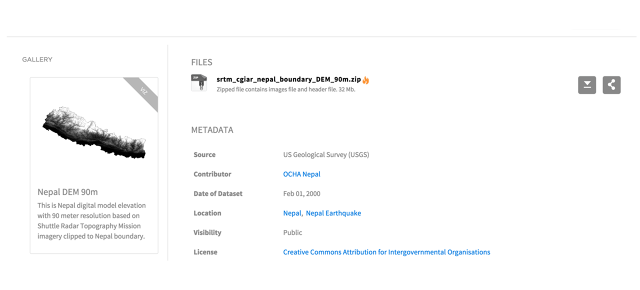
HDX
The HDX doesn’t seem like a lot. The landing web page for the Nepal earthquake is topped with a picture of seismic process in the region. under that, you’ll see the confirmed injured and lifeless in huge numbers. under that, you may have a easy checklist of recordsdata—things like inhabitants densities, local weather knowledge, river maps, and roads.
however with the clicking of a mouse, each and every of those pieces of information will also be downloaded in standardized, editable file formats—assume spreadsheets and CSVs, rather than stagnant PDFs. And with another click on of the mouse, any authorized organization can add its knowledge to share as a part of that list. this mixture of fast get admission to and helpful, predictable information is what HDX was once designed for, and consistent with more than one NGOs we talked to, it’s exceptional on this planet of humanitarian information.
the way it’s Used
sooner than HDX, humanitarian companies wasted precious time on formatting. “we are feeding data to approximately six world companies, and everyone had completely different information and formats. So for us, it was once an absolute nightmare,” explains Justine Mackinnon, president of Standby job power. “Now, with HDX, everything goes into one layout, gets put on the platform, and it’s accessed with the aid of everybody.”
Standby job force is a crew of about 2,000 individuals from 80 nations who’ve been examining tens of millions of Nepal-related tweets to build a few databases, starting from urgent desires and requests to which responders have reached the u . s . a . to who has what sort of equipment where. by the time this story is printed, 10 of these databases will be uploaded to HDX for public use.
“It’s in reality, really early on [in Nepal],” says Sarah Telford, program supervisor of HDX. “the kind of information modifications with the predicament. right now, what’s necessary is geospatial data. where are the roads? the place are the cities? the place are the hospitals? so that they comprehend what’s blocked and where the helicopters can land.”
The group MapAction was able to hop on HDX shortly after the earthquake and download five key shapefiles of the area—basic templates exhibiting geographical options like mountains and rivers. With these, they produce “quick-and-dirty” maps that can be utilized in PowerPoint displays to coordinate efforts by the government, the UN, and NGOs. they usually’ll print maps on the ground for volunteers who function generally with out electrical energy.
on the crimson cross, Kunce immediately downloaded the information on Nepal’s poverty information to use in the organization’s planning efforts. Impoverished areas tend to undergo the most in a natural disaster, and with the HDX knowledge, the crimson cross could installation its instruments based upon this census-degree data.
The standard Tongue
however what is HDX’s genuine “standard tongue”? Is it just having files in something rather then PDFs?
It ends up that the fulfillment right here is a bit more sophisticated than that. HDX has a easy, streamlined entrance finish—a mix of sheer utilitarianism and normally pleasing aesthetics—that has led to what Telford calls a “zeitgeist” in her field. due to HDX’s design, formerly insular multinational firms are more actively and openly sharing their information.
“Nerds like me really like one thing that’s vivid,” Kunce explains. “And HDX is in reality vibrant. So every person have been like, let’s go use the HDX.”
Importantly, HDX is internet hosting one piece of knowledge that unites all the large avid gamers like a Rosetta Stone. It’s the UN’s checklist for location Codes (or P-Codes for brief). P-Codes are numerical identifiers which can be assigned to areas like cities, neighborhoods, or hospitals in big knowledge sets. on the other hand, P-Codes aren’t standardized—they’re now not merely based upon recognizable coding like GPS coordinates. as an alternative, every organization might have completely different P-Codes for the same position, built upon entirely completely different good judgment. On top of that, these P-Codes might even exchange over time. So P-Codes used within the aftermath of Nepal’s 2015 earthquake would possibly no longer be used in a catastrophe occurring in 2017.
Why isn’t there some common checklist of P-Codes? in fact, there has been. on the grounds that 1999, the UN has launched a P-Code standard. It was on-line for someone to obtain, and still exists online outdoor of HDX. however as Kunce explains, nobody was the usage of it, so uncooked knowledge he’d be mining to create pink cross maps from quite a lot of sources wouldn’t fit up. but within a year of HDX’s launch, he has seen the P-Code usual tighten up across the world. Why? He believes that HDX proved so appealing for data managers to make use of that they wanted to get in keeping with the more collaborative nature of the UN’s P-Code device.
“principally, it wasn’t a technical drawback. It was once a political downside,” Kunce says. “From my perspective, sitting outdoor HDX and looking at it develop, it solved a technical problem in that it was once a better total platform to share knowledge, and it solved the political drawback [of people using the same standard], as a result of it used to be a better technical platform.”
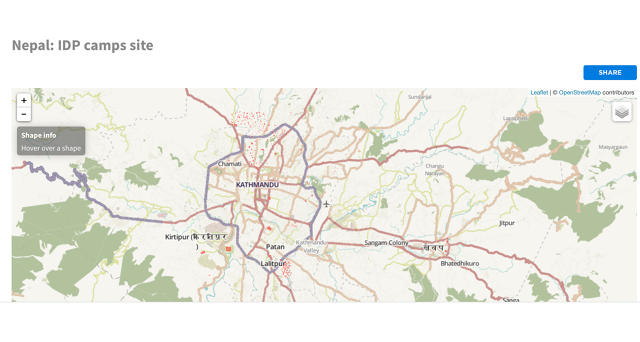
Some Politics stay
As bullish as Kunce is on the openness of HDX information-sharing, he admits that his personal organization, the pink go, has yet to upload information into it. “We hope to be. We’re working arduous so to try this,” he says. “[But] HDX is a moderately new thing. It’s handiest been round for a 12 months. I prefer to suppose that the crimson cross strikes in reality quick, however we’re an enormous organization. We do try to share our knowledge as much as that you can imagine, but we haven’t found out the mechanics of striking our personal data on there but.”
but what “mechanics” could be in the best way, on condition that the crimson cross is already mining HDX information, and due to this fact, already adhering to many of HDX’s file requirements?
“it’s a must to keep in mind that, not directly, all these companies are companies, so constructing the trust to share is changing full behaviors and the best way companies work,” Mackinnon says. “It’s a little unnerving for some corporations as a result of they used to work in silos. We’re now pronouncing to them, ‘we would like you to share.’ They’re thinking, ‘Why do we want to share our consumer base?’—that’s striking it in very uncooked phrases.”
not directly, Mackinnon believes that HDX is not going to just prove a handy platform for groups like the pink go to mine, but an economically sound one for everyone to take part in.
“firms are seeing the advantages,” she says. “They’re finding one of the most work they’re doing has already been executed … the entire collaborative in turn saves time, cash, effort, the whole lot.”
[Top Photo: Prakash Mathema/AFP/Getty Images]
fast company , read Full Story
(136)

